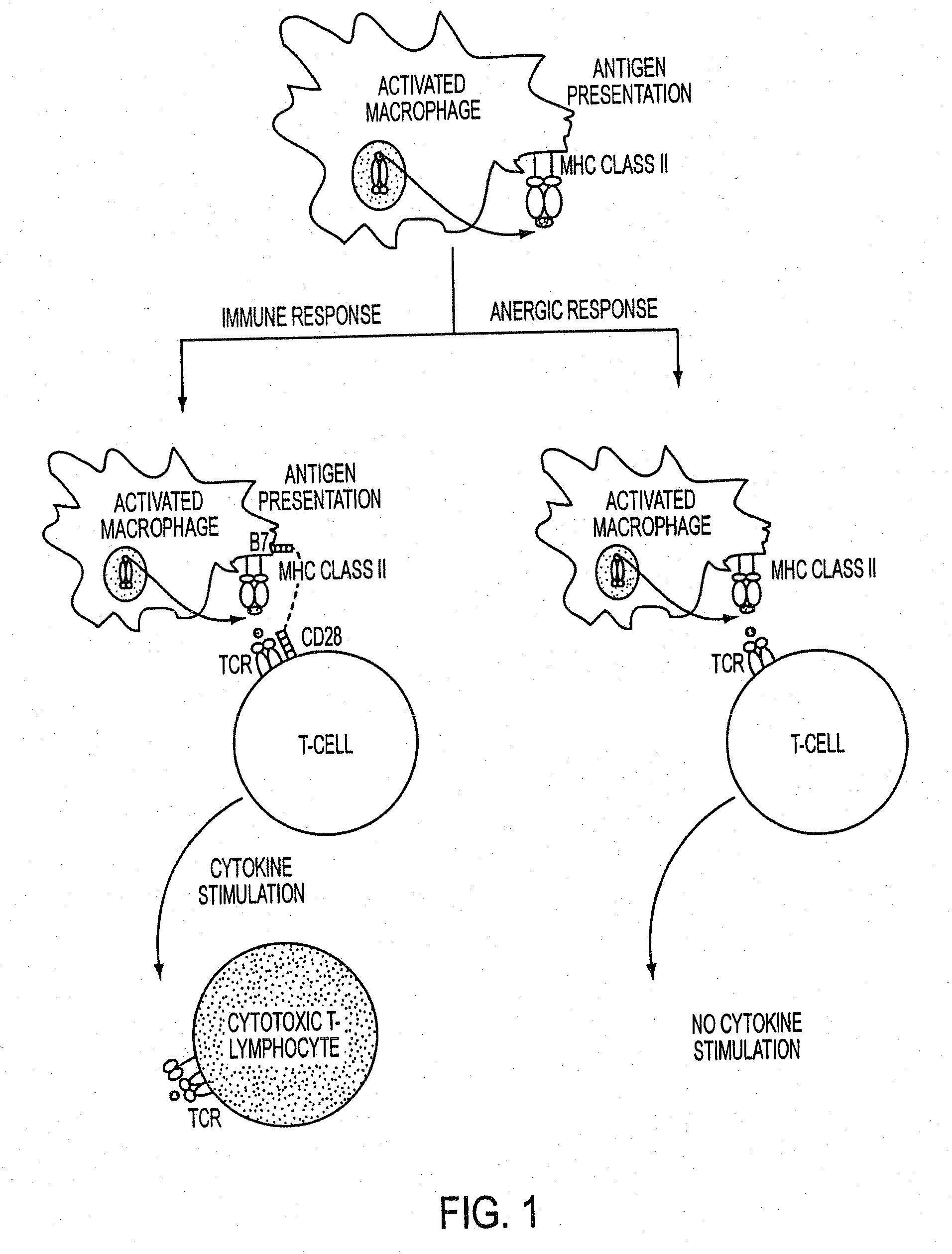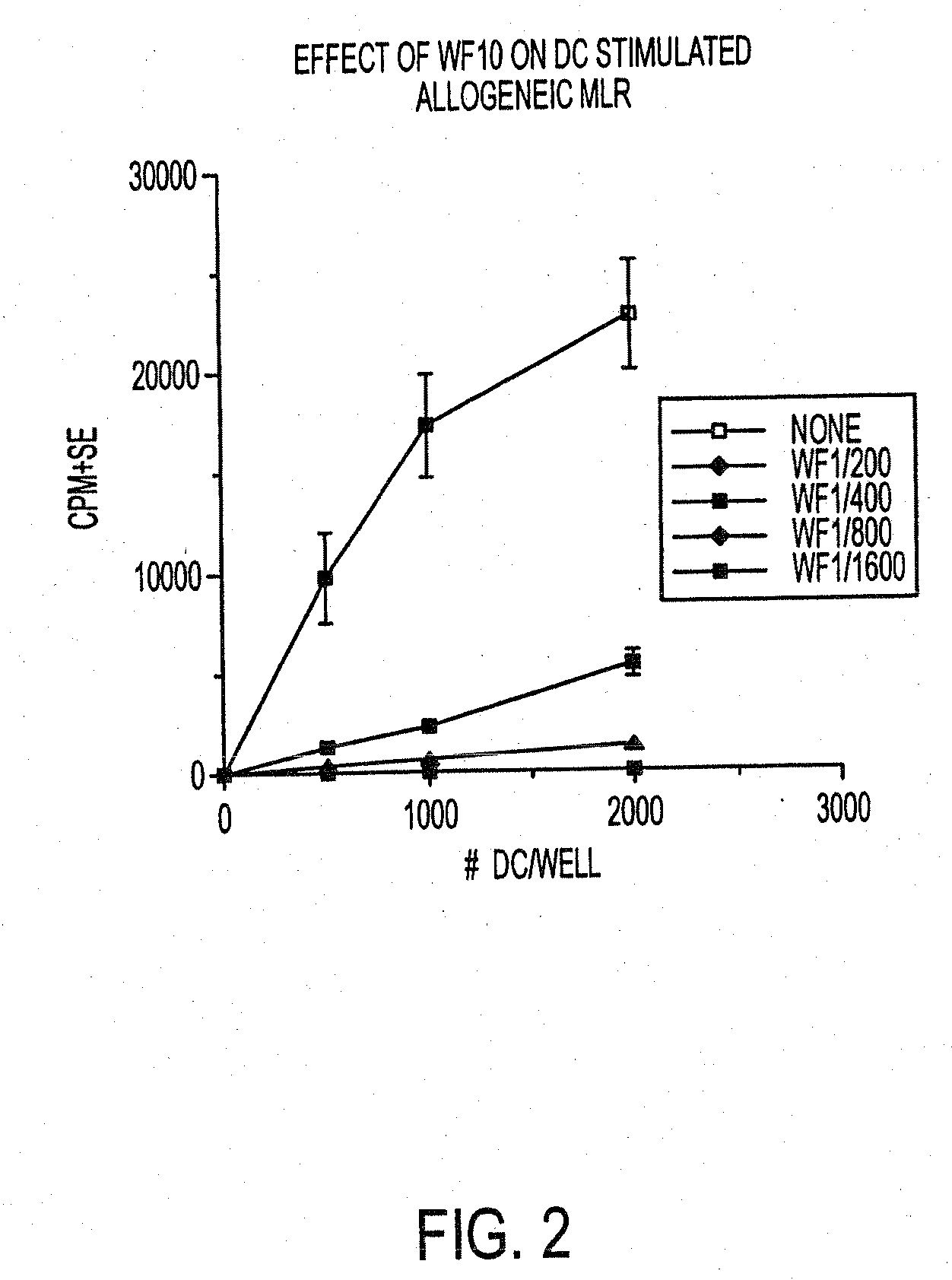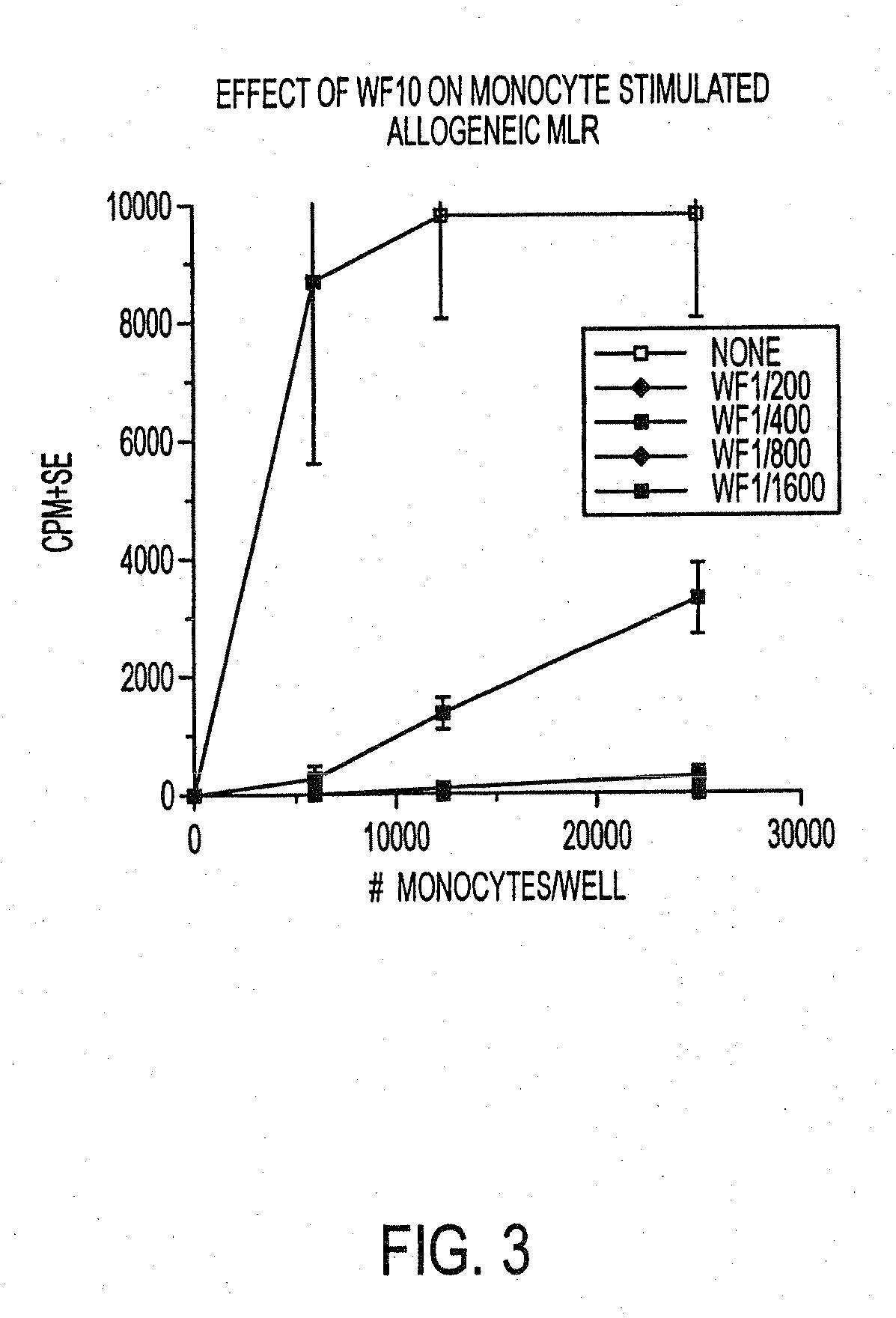Use of a chemically-stabilized chlorite solution for inhibiting an antigen-specific immune response
a technology of antigen-specific immune responses and chlorite solutions, which is applied in the direction of immunological disorders, drug compositions, metabolism disorders, etc., can solve the problems of unfavorable immune response, undesirable t cell proliferation, and autoimmunity,
- Summary
- Abstract
- Description
- Claims
- Application Information
AI Technical Summary
Benefits of technology
Problems solved by technology
Method used
Image
Examples
example 1
[0068]In this example, and the following examples 2-4, details regarding the methods used in performing these examples can be found in Fagnoni et al., Immunology, 85: 467-74 (1995), the disclosure of which is incorporated herein by reference in its entirety. This example, together with the following examples 2-4, elucidate the role of a stabilized chlorite solution in preventing dendritic cell-mediated costimulation.
[0069]Effect of WF10 on Dendritic Cell (DC) Stimulated Allogeneic MLR
[0070]Dendritic cells, T cells and monocytes were obtained in the manner described in Fagnoni et al. To assess the effects of WF10 on DC-dependent T cell activation, freshly isolated CD4+-T cells were activated with allogeneic MLR in the presence or absence of WF10 to DC. Purified resting CD4+ T cells (5-10×104 / well) were cultured with irradiated (25 Gy) allogeneic DC in U-bottomed 96-well plates containing 200 μl of complete medium. The cultures were maintained at 37°, 8% CO2 in humidified air for 5 da...
example 2
Effect of WF10 on Monocytes Stimulated Allogeneic MLR
[0072]Example 1 was repeated with the exception that adherent monocytes, obtained in accordance with Fagnoni et al. Were used instead of DC. The results are shown in FIG. 3, and demonstrate that administration of WF10 was effective in inhibiting proliferation of CD4+ T-cells from monocyte stimulated MLR. Indeed, with administration of WF1 / 1600, the stabilized chlorite solution was effective in completely inhibiting proliferation of CD4+ T-cells from monocytes stimulated with allogeneic MLR, despite increased concentration of monocytes per well.
[0073]The results of examples 1 and 2 therefore show that WF10 is effective in inhibiting proliferation of CD4+ T cells from DC or monocytes stimulated with allogeneic MLR.
example 3
[0074]Examples 3 and 4 were carried out to determine the effect of WF10 on the inhibition of antigen-induced proliferation of T cells using various antigens. In this example, purified resting CD4+ T cells (5-10×104 / well) were cultured with irradiated (25 Gy) autologous DC in U-bottomed 96-well plates containing 200 μl of complete medium. The cultures were maintained at 37°, 8% CO2 in humidified air for 6 days. Cultures were pulsed with 1 μCi [3H]thymidine (6-7 Ci / mm, New England Nuclear, Boston Mass.) 19 hours before harvest. The [3H]thymidine incorporation by proliferating cells was measured in a β-scintillation counter.
[0075]Soluble keyhole limpet hemocyanin (KLH) and tetanus toxoid (TT) were added to autologous DC. Measurements were taken for no addition of WF10, addition of WF10 / 200 and WF10 / 800 (representing administration of WF10 to the culture medium at time 0 of 0, 1 ml / 200 ml of solution and 1 ml / 800 ml of solution, respectively) to determine the proliferation of CD4+ T cel...
PUM
 Login to View More
Login to View More Abstract
Description
Claims
Application Information
 Login to View More
Login to View More - R&D
- Intellectual Property
- Life Sciences
- Materials
- Tech Scout
- Unparalleled Data Quality
- Higher Quality Content
- 60% Fewer Hallucinations
Browse by: Latest US Patents, China's latest patents, Technical Efficacy Thesaurus, Application Domain, Technology Topic, Popular Technical Reports.
© 2025 PatSnap. All rights reserved.Legal|Privacy policy|Modern Slavery Act Transparency Statement|Sitemap|About US| Contact US: help@patsnap.com



